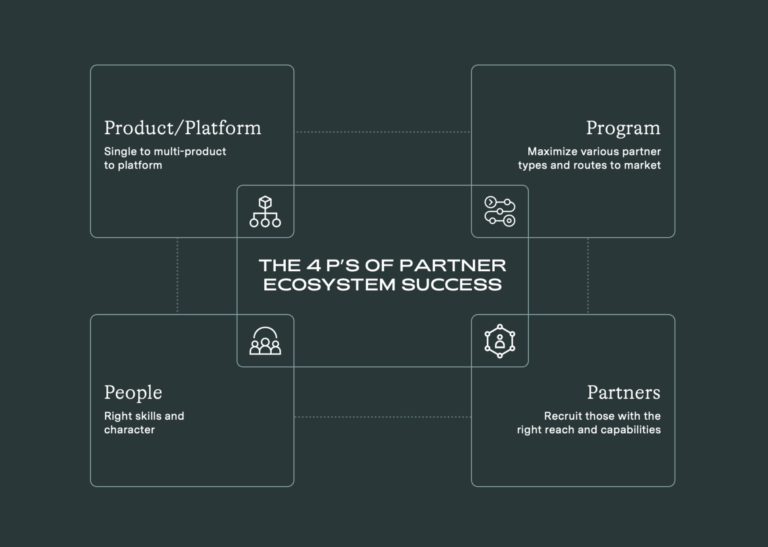Author’s note: Sapphire Ventures invests in U.S., European and Israeli early-stage venture funds.
A little over a year ago I published in TechCrunch “A Closer Look At European Investing”. In the article, I outlined reasons why we at Sapphire Ventures are bullish on Europe, particularly as a limited partner (LP) in early-stage venture funds. Along the way, I made predictions, declarations and observations. Fast-forward to today, and much has happened — some of which was expected and some not so much.
So how did we do? Here’s what we thought 12 months ago and what we’ve learned and done since.*
The burgeoning European startup ecosystem: Last year we declared our belief that Europe was somewhere between version 2.5 and 3.0 given the threat of Grexit (remember when Grexit was all we were worried about?) and the capital markets’ rollercoaster ride. In Europe, this year has brought us Brexit and continued currency challenges as a result, as well as the reversal of fortune for Rocket Internet (RKET). Counterbalancing these forces is the further widening and deepening of the multiple tech hot spots in Europe, including Berlin, London, Paris and Stockholm and newer locales, like Lisbon, making waves.
Furthermore, last year at this time there were 40 companies valued at a billion dollars or more in Europe. Now there are 47**. While the lion’s share still call London home, Luxembourg, Denmark and Switzerland each produced a one billion-dollar company in 2016. In the not-so-distant past, folks may have wondered if Europe could produce multiple billion-dollar companies. We believe that question is now answered.
U.S. venture funds have also continued to take notice of what’s going on in Europe. In 2016, like in 2015, there appeared to be a preference for seed money to come from a local source.
Simultaneously, there has been a continued professionalization of European seed investors. By the time a Series A rolls around, though, there is now a range of European funds engaging as well as a consistent scattering of U.S. funds. Notable this year has been Series A investments by heavy hitters Benchmark, True Ventures and Union Square Ventures. Post-Series A there is even greater U.S. fund activity as nicely detailed by Idinvest’s Guillaume Durao in a recent post about which U.S. venture funds are really doing what in Europe.
Report card grade: A. We think we called the stage right.
Innovation knows no boundaries: Yup. Still true. Individual countries may be more or less friendly to immigration at any given point in time (ahem, Brexit, and the still unknown impact of a President-elect Trump administration). We are all living with new uncertainties.
Nevertheless, we believe that entrepreneurs will not stop innovating and will find locations and funding sources receptive to them. Sped along of course by the democratizing power of technology, continued decreasing technological costs to start companies and the increased awareness by European and U.S. venture capitalists alike thatgreat companies are being born in Europe every day.
Report card grade: A-. It would be an A, but we are sensitive to grade inflation.
Competition: Our prediction last year was more of an observation. That venture in the United States is a competitive sport — more so than in Europe. The same is true for 2016 with Europe continuing to up its game.
Fundraising in the United States has been on a tear this year. Some US$33 billion+ has been raised through Q3, which is more money than has been raised by venture funds since 2001. This money has gone into some 157 funds. Total fund count is down from past years, but the funds raised have been larger.
In comparison, we have counted about 40 European venture funds that closed through the end of Q3 representing approximately US$7.6 billion. This seems to be more or less on track from past years in which 46 funds were raised in 2015 and 55 in 2014+. Interestingly we are seeing the same pattern of fewer funds raising more capital playing out in Europe that we have also been seeing in the United States.
For example, in 2011 some 74 European venture funds raised about US$5.6 billion. More funds, fewer dollars. Why? Because of the 74 funds, 77 percent were raised by funds that were smaller than US$100 million. Fast-forward to today, and of the US$7.6 billion raised through Q3 only 38 percent went into sub-US$100 million funds and a whopping 13 percent went into funds greater than US$500 million. This is up from a mere 3 percent in 2011+.
First-time fund managers seem to be faring a bit better in Europe than in the United States. From 2011 to 2015 in the United States, first-time funds have averaged 34 percent of funds raised in a given year. However in 2016, through Q3, only 20 percent of funds raised have been first-time funds. Europe on the other hand has seen first-time funds being an average of 22 percent for 2011 to 2015 — with 2016 being a stronger year given that 28 percent of funds raised through Q3 were first-time funds.
Report card grade: B. We believe we called it right about the United States being a more intense venture battleground, but we did not predict 2016 being a larger fundraising year than 2015, as 2015 was nothing to sneeze at. Also we’re happily surprised by Europe’s continued appetite for new fund managers.
The power of the global observatory: We built our business based on this premise. And over the last 12 months we have repeatedly leveraged what we have seen happening in one geography to inform our thesis in other geographies. Sometimes they have moved in sync — like with the similarities in fundraising patterns between the United States and Europe. Other times they haven’t. Institutionalizing of seed in Europe is happening a few years after it happened in the United States. Either way, we — and our investments — benefit from the added insight.
Report card grade: A-. Again, we are sensitive to grade inflation and bias of our beliefs.
The future does not in fact always look like the past: Last year we highlighted the notable trend we perceived of the new founder-friendly ethic among European funds and the number of new firms launched. We believe that this trend continues. The number of first-time European funds raised in 2016 is up from 2015. Entrepreneurs themselves seem to continue to mature and look to leverage funding sources from both Europe and the United States as their businesses grow so they can get the best of both worlds.
Report card grade: A. This premise is true and will always be true thanks to the immense transformative power of innovation among other factors, so that was kind of an easy one.
And here’s how we put our money where our mouth is:
By Fall 2015, Sapphire had become an investor (or Limited Partner) with five early-stage European fund managers — 83North, Creandum, Point Nine Capital and two who must remain nameless due to confidentiality agreements. These investments reflect our thesis that Europe has multiple hot spots for innovation out of which the next great company could get its start.
Over the following 12 months we met with multiple European managers in person as well as by phone and visited Berlin, Copenhagen, London and Stockholm. Notable in its absence, Paris. Nous sommes désolés and we promise to visit soon.
The net result? Over the past 12 months we’ve made commitments to three new European early-stage venture funds.
- LocalGlobe, the new London seed fund managed by Saul and Robin Klein and Ophelia Brown. Local Globe is net-new to Sapphire’s portfolio.
- Blue Yard, an early-stage, thesis-driven fund based in Berlin focused on the decentralizing of markets, empowering users and liberating data. Also net-new to Sapphire’s portfolio.
- Lastly, we re-upped with our existing manager Creandum who raised a new fund.
These commitments reflect both our continued support to our existing managers, as well as selectively adding new managers to our portfolio. Collectively Europe represented about 25 percent of our deal activity, right on track with our desired portfolio construction. The rest we invested in U.S. early-stage funds with some carved out for Israel-based funds.
Overall we’re still bullish on Europe, and we look forward to seeing what the next 12 months have in store. Onward and upward.
Thank you to Eugene Chou (@EugeniusSays) @SapphireVC and Colette Ballou (@coletteballou) for all your help with this article.



